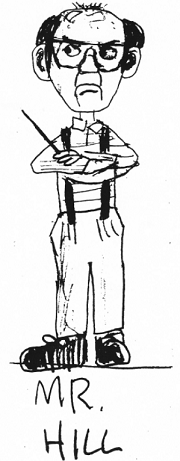Have a Classroom Discipline Plan
 Few skills are as crucial to being a successful teacher as classroom discipline. Many very talented musicians have not succeeded as teachers because they lacked classroom management skills.
Few skills are as crucial to being a successful teacher as classroom discipline. Many very talented musicians have not succeeded as teachers because they lacked classroom management skills.
One principal told me that no matter how good potential teachers look on paper or how exuberant their recommendations are or how well they survived student teaching, hiring them is always a gamble if they haven’t actually taught. It’s not so much about their knowledge of the subject matter as whether they can manage the classroom.
Discipline is an area where the teacher has to find what works best for himself or herself. There are several models to consider and certainly any plan is better than no plan.
What worked best for me was Boyd K. Packer's approach to discipline in his book
Teach Ye Diligently. He suggests that a teacher has an arsenal of disciplinary weapons or tools at his disposal, ranging from "small-arms" to "heavy artillery". In order to avoid “[killing] a fly with a sledgehammer” use the smallest weapons first. His list is as follows:
- Stop talking and wait.
- Observe, without singling out anyone, that “someone” in the class is not cooperating.
- Look at the “someone” -- generally silently
I wasn’t very good at using his first two suggestions but the silent look worked well for me, especially if I shook my head slightly.
Mr. Packer also emphasized the importance of using humor. One of my disciplinary tools that worked well and brought a little humor to the class was my finger gun. If a student was disrupting class, I would point at him, wait until he was looking at me, give him my sternest look, fire my finger gun, and then continue teaching as if nothing had happened. This typically caused a little laughter and released the tension of the situation. If a large group of students was disrupting, I had a machine gun that worked well also. (In today's world using finger guns may not be politically advisable, but it worked well up through 2006.) My list of disciplinary "weapons" follows:
- Silent look with a shake of the head
- Finger guns
- Rowdy mark and call parents
- Have the student put his instrument away.
- Escort the student to the choir room. (The choir director and I agreed to babysit for each other when needed.)
- Remove the student from the class.
I used the first two as warnings. If the student continued to misbehave, I would stop teaching, deliberately shake my head and look as disappointed as possible, pick up my roll book, look at the student, and give him a “rowdy” mark. The rowdy mark lowered the student’s citizenship grade (and academic grade if it wasn’t made up - see Grading Tips/Attitude for make-up procedures.) After school I would call the student’s parents, let them know what happened, ask for their help, and get them on my side early in the disciplinary process.
In the rare instance when one or two rowdy marks didn’t solve the problem I had to ask the student to put his instrument away and "sit on the wall" (sit at the side of the room). If he continued to disrupt, I would escort him to the choir room.
There were only 14 students in my high school band in Bancroft. One young man was a very talented piano player who played clarinet and baritone as well. He was also a continual discipline problem. After several weeks of conflict, I talked to the principal about the problem. He surprised me by saying, “It’s either him or you,” meaning that either the student left the band or I would end up leaving the profession. We removed the student from the band and I had a great year with the remaining 13 students.
Documentation is essential. If you have a list of things the student has done and your efforts to help him and you have communicated often with the parents, it’s easy for everyone to see when removal is necessary.